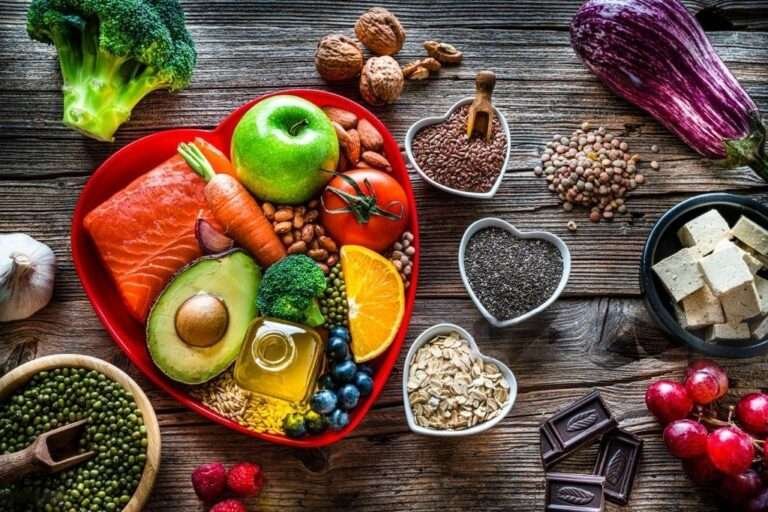Supercharge Your Diet Discover the Best Iron-Rich Fruits and Vegetables
Introduction
In our quest for a healthier lifestyle, iron plays a pivotal role in our diet. It’s essential for producing hemoglobin, a protein that helps red blood cells deliver oxygen throughout your body. Without sufficient iron, you can feel lethargic, weak, and prone to infections. The good news? Nature offers a bounty of fruits and vegetables rich in iron, helping you meet your daily requirements naturally. This article explores the best iron-rich fruits and vegetables to supercharge your diet.

Why Iron is Crucial for Your Health
Iron is not just a metal; it’s a vital nutrient that your body needs to function effectively. It helps in metabolism, energy production, and the immune system. Adults need about 8-18 mg of iron daily, with pregnant women requiring even more. Understanding the importance of iron is the first step in transforming your health.
Top Iron-Rich Fruits to Add to Your Diet
1. Prunes
Prunes are not only good for digestion but also excellent sources . A half-cup serving can provide about 0.81 mg of iron. They are also high in fiber, which aids in stabilizing blood sugar levels.
2. Mulberries
Mulberries, a lesser-known fruit, offering 2.6 mg per cup. These berries are also packed with vitamin C, which significantly boosts iron absorption.
3. Dried Apricots
Dried apricots are a convenient snack rich food, containing about 1.2 mg per one-half cup serving with the skin on. They are also high in antioxidants and fiber, which means they have quite a few health benefits. It is rich in friendlier bacteria, enzymes, and nutrients which help improve digestion as well as skin health and protection of all cells from environmental stressors.
Essential Iron-Rich Vegetables
1. Spinach
Spinach is famous for its high iron content, providing 3.2 mg per half-cup cooked. It’s also loaded with vitamin C, vitamin A, and fiber.
2. Broccoli
Broccoli is not only high in iron, with 1 mg per cup but also full of essential nutrients like vitamins K and C, which help with iron absorption.
3. Beet Greens
Beet greens, the leafy tops of beets, are packed with iron, offering about 2.5 mg per cooked cup. They are also rich in fiber, and vitamins A and K.
Combining Iron-Rich Foods for Maximum Absorption
1. Vitamin C and Iron
Consuming vitamin C-rich foods like oranges or tomatoes alongside foods can enhance iron absorption. Try a spinach salad with strawberry slices or a broccoli stir-fry with bell peppers.

2. Avoiding Iron Blockers
Some foods, like coffee or dairy, can inhibit iron absorption. For optimal iron uptake, consider consuming these foods at different times than your iron-rich meals.
Iron-Rich Recipes for Your Diet
1. Spinach and Mushroom Quiche
This quiche is not just delicious but packed with iron, thanks to the spinach and mushrooms. It’s perfect for a healthy breakfast or a light dinner.
2. Broccoli and Beef Stir Fry
Combine iron-rich broccoli with beef, another excellent iron source, for a powerful dish that’s both nutritious and satisfying.
Tips for Maintaining an Iron-Rich Diet
- Include a variety of iron-rich foods in your meals to avoid deficiencies.
- Use cast iron cookware to slightly boost the iron content of your food.
- For those with iron deficiency, consider consulting a healthcare provider for supplements.

Faqs
What Are the Best Iron-Rich Fruits to Include in My Diet?
Fruits like dried apricots, raisins, prunes, and mulberries are high in iron content and can be easily added to your daily diet. These fruits not only provide iron but also contain fiber, vitamins, and antioxidants that support overall health.
Which Vegetables Are Highest in Iron?
Leafy greens such as spinach, kale, and Swiss chard are among the best iron-rich vegetables. Other options include broccoli, peas, and sweet potatoes, which contain iron and additional nutrients like vitamin C, which helps boost iron absorption.
How Can I Increase Iron Absorption from Fruits and Vegetables?
To maximize iron absorption from plant-based sources, pair iron-rich foods with those high in vitamin C, such as oranges, strawberries, or bell peppers. Vitamin C helps enhance the body’s absorption of non-heme (plant-based) iron, making your diet more effective.
What Are the Signs of Iron Deficiency, and Can Diet Help?
Common signs of iron deficiency include fatigue, weakness, pale skin, and frequent infections. Including iron-rich fruits and vegetables in your diet can help prevent or manage iron deficiency, though severe cases may require consultation with a healthcare provider.
Is Plant-Based Iron as Effective as Iron from Animal Sources?
While plant-based (non-heme) iron is absorbed less efficiently than animal-based (heme) iron, consuming a variety of iron-rich fruits, vegetables, and vitamin C-rich foods can improve absorption. A well-balanced diet with diverse iron sources can still effectively meet daily iron needs.
Conclusion
Incorporating iron-rich fruits and vegetables into your diet is a delicious and natural way to boost your health and energy levels. From vibrant berries to nutritious greens, these foods not only enhance your iron intake but also bring a plethora of vitamins and minerals to support overall health. Embrace these superfoods and watch your well-being and vitality soar. Remember, a balanced diet rich in essential nutrients is the key to a healthy, energetic life.
Read More: 14 Surprising Signs of Vitamin Deficiency






